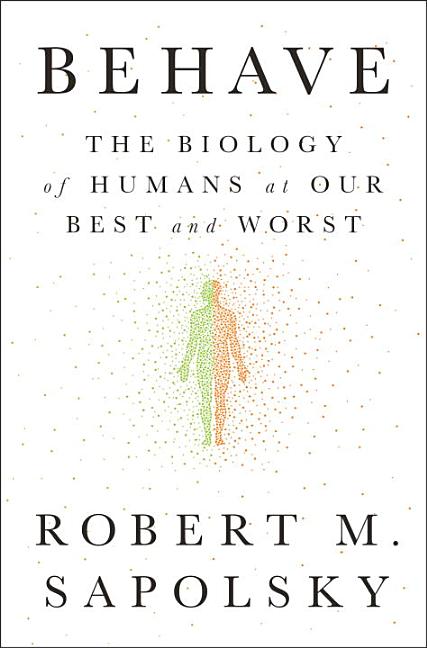New York Times bestseller - Winner of the Los Angeles Times Book Prize - One of the Washington Post's 10 Best Books of the Year
"It's no exaggeration to say that Behave is one of the best nonfiction books I've ever read." --David P. Barash, The Wall Street Journal "It has my vote for science book of the year." --Parul Sehgal, The New York Times "Immensely readable, often hilarious...Hands-down one of the best books I've read in years. I loved it." --Dina Temple-Raston, The Washington Post From the bestselling author of A Primate's Memoir and the forthcoming Determined: A Science of Life Without Free Will comes a landmark, genre-defining examination of human behavior and an answer to the question: Why do we do the things we do? Behave is one of the most dazzling tours d'horizon of the science of human behavior ever attempted. Moving across a range of disciplines, Sapolsky--a neuroscientist and primatologist--uncovers the hidden story of our actions. Undertaking some of our thorniest questions relating to tribalism and xenophobia, hierarchy and competition, and war and peace, Behave is a towering achievement--a majestic synthesis of cutting-edge research and a heroic exploration of why we ultimately do the things we do . . . for good and for ill.
"It's no exaggeration to say that Behave is one of the best nonfiction books I've ever read." --David P. Barash, The Wall Street Journal "It has my vote for science book of the year." --Parul Sehgal, The New York Times "Immensely readable, often hilarious...Hands-down one of the best books I've read in years. I loved it." --Dina Temple-Raston, The Washington Post From the bestselling author of A Primate's Memoir and the forthcoming Determined: A Science of Life Without Free Will comes a landmark, genre-defining examination of human behavior and an answer to the question: Why do we do the things we do? Behave is one of the most dazzling tours d'horizon of the science of human behavior ever attempted. Moving across a range of disciplines, Sapolsky--a neuroscientist and primatologist--uncovers the hidden story of our actions. Undertaking some of our thorniest questions relating to tribalism and xenophobia, hierarchy and competition, and war and peace, Behave is a towering achievement--a majestic synthesis of cutting-edge research and a heroic exploration of why we ultimately do the things we do . . . for good and for ill.
Details
| Publish date | May 02, 2017 |
| Publisher | Penguin Press |
| Format | Hardcover |
| Pages | 800 |
| ISBN | 9781594205071
1594205078 |



